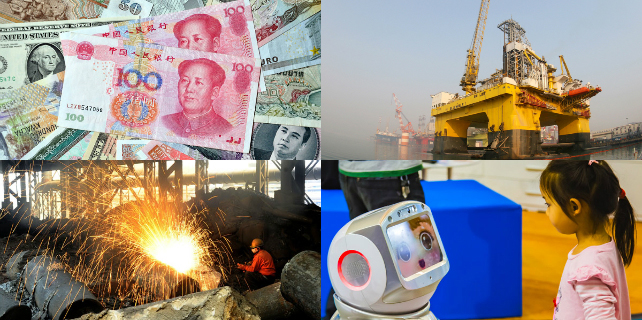Five principles to leverage period of opportunity
Many Chinese aphorisms urge people to work hard. Few urge them to work smarter, but that, as the country's leadership has made clear, is what is needed now.
Although it is its hard work that has propelled the country's rapid economic growth since the launch of reform and opening-up, and which has seen it become the world's second-largest economy, the dividends from this labor are diminishing, not only because its population is aging, but also because the world is on the cusp of a new industrial revolution, one that requires brains, not brawn.
China was a late participant in the first three industrial revolutions; it is determined to be one of the leaders of the fourth. That is why it is emphasizing a skilled workforce, and why, over the past five years, it has prioritized further opening-up and creating an environment conducive to innovation.
The aim is to make Made in China no longer synonymous with goods produced in the "world's factory", but instead an emblem of its ingenuity and inventiveness, and a badge of honor for its competitiveness.
The pursuit of innovation and smart industry is by no means a makeshift move. At its 18th National Congress in 2012, the Communist Party of China made fostering innovation a priority for national development, and two years later the country's leaders called for mass innovation and the entrepreneurial spirit. A comprehensive 10-year action plan was introduced in May that year with the aim of moving China up the value chain.
At the same time, the country has continued to invest heavily in scientific research. Last year, 2.1 percent of its GDP, or 1.54 trillion yuan ($232 billion), was invested in R&D. Only the United States invested more. As a result of such financial inputs, the contribution of science and technology to economic growth has doubled over the past 10 years, and it now accounts for 56.2 percent. It is expected to reach 70 percent by 2020.
Despite all this, there remains a lot to do. The authorities cannot vacillate in their efforts to reduce red tape, protect intellectual property rights and push through reforms to improve the financial sector and research environment.
Also, crucially, as Premier Li Keqiang has said, the authorities must be willing and able to adapt, as the leading edge of the fourth industrial revolution has already proved to be the harbinger of rapid disruptions.
In the proposal for the 13th Five-Year Plan (2016-20), the first blueprint for development under Xi Jinping's presidency, the five principles considered necessary to ride this wave of the future were presented-innovation, coordination, green development, opening-up and inclusiveness.
The 19th National Congress of the CPC is expected to reaffirm these as integral to the pursuit of national rejuvenation.
















